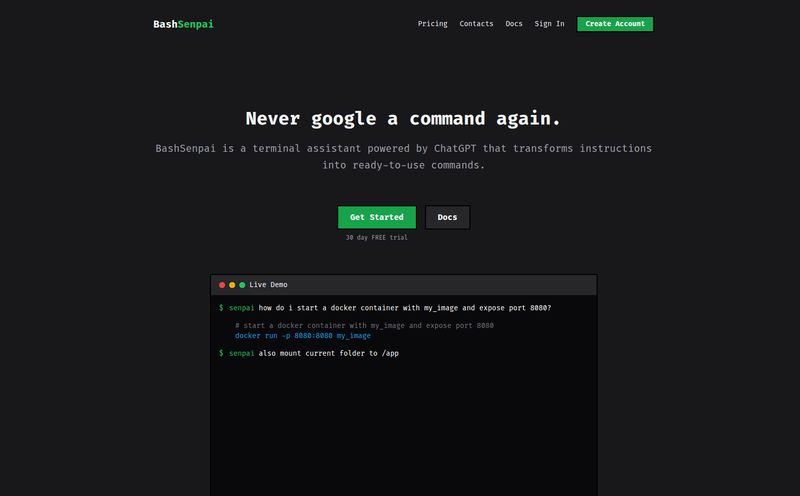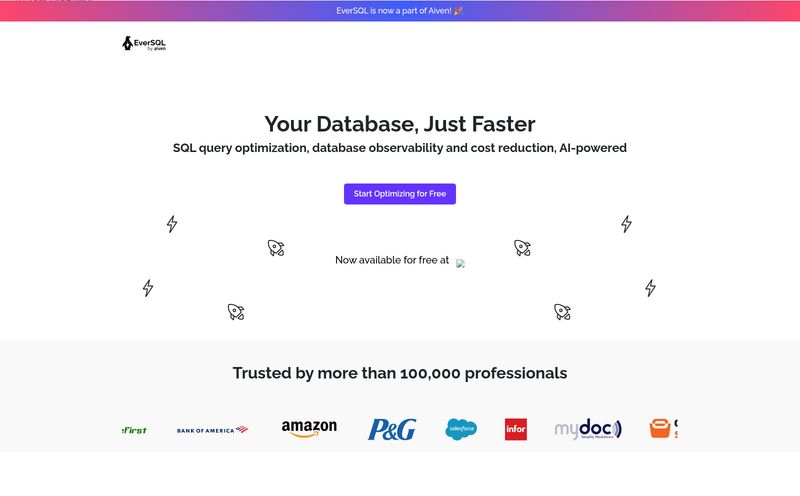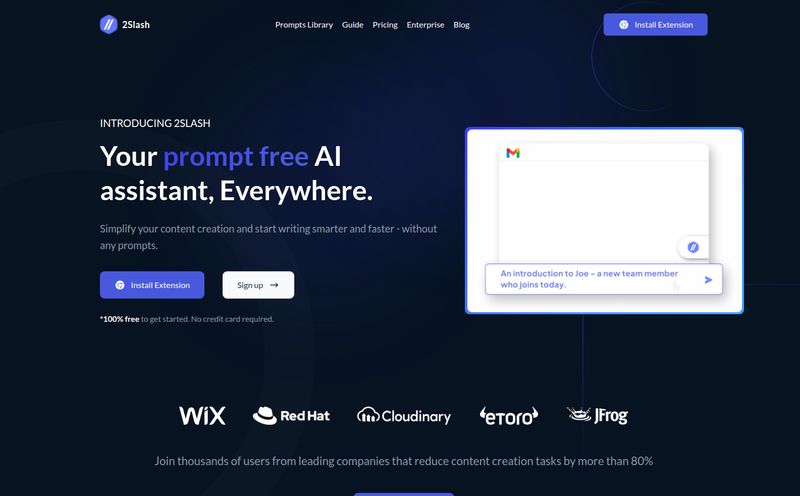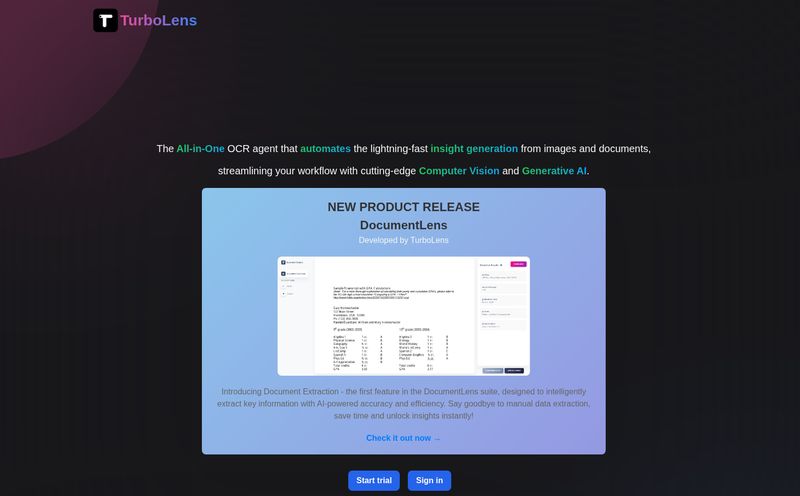We've all been there. You open your work email, and it's a tidal wave. A dozen 'all-staff' announcements, a policy update that doesn't apply to your department, and a rah-rah message from a VP you've never met. You skim, you archive, you forget. The internal comms team might as well be shouting into the void. It’s a problem I've seen in countless companies, big and small.
For years, the solution has been... more. More channels, more messages, more noise. We got intranets, then chat apps, then video platforms. But what if the answer isn't more communication, but smarter communication? That's the promise of platforms like Firstup. I’ve been hearing their name pop up more and more in HR tech circles, so I decided to take a proper look. And honestly? It's pretty interesting.
So, What Exactly is Firstup? (And Why Should You Care?)
On the surface, Firstup is an "intelligent communication platform." But that description feels a bit... flat. Like calling a symphony orchestra 'a bunch of people with instruments'. What it really aims to be is the conductor for your entire workforce communication strategy. It’s not just another megaphone to blast messages; it’s a system designed to get the right message to the right person at the right time, no matter where they work.
Think about the difference. A standard all-staff email is a megaphone. Firstup is more like a set of personalized, high-fidelity headphones for every single employee, from the CEO in the corner office to the forklift driver on the warehouse floor. And that last part is critical. So many internal tools are built for desk workers, completely ignoring the massive frontline workforce that keeps so many businesses running. Firstup makes a big deal about reaching everyone, and in my book, that’s where things start to get compelling.
The Core Features That Actually Matter
A features list can be boring, so let's talk about what this stuff actually does. The platform is built on a few core ideas that work together to, as their own site says, "get outcomes, not just send communications."
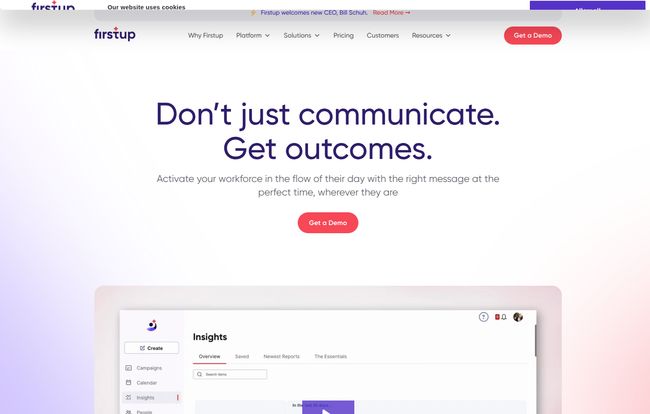
Visit Firstup
The AI-Powered Orchestra Conductor
This is the secret sauce. Firstup uses AI to orchestrate campaigns. Instead of you manually sending an email, then a push notification, then posting on the intranet, the platform does it for you. It learns who prefers what channel and can personalize the content on the fly. For instance, a new benefits enrollment announcement could show different call-to-action buttons for salaried vs. hourly employees. It's a small detail, but it's the kind of thing that cuts through the noise and makes people feel seen. No more irrelevant pings.
Reaching the Unreachable: Your Frontline Workforce
This is probably its biggest differentiator. How do you get an urgent safety update to a retail worker who doesn't have a company email? Firstup solves this with a multi-channel approach that includes a mobile app, text messages, and even integrations with digital signage. This is huge for industries like manufacturing, healthcare, and logistics, where a huge chunk of the staff is untethered from a desk. It bridges a communication gap that, for many companies, has been a massive operational risk.
From Data Noise to Actionable Insights
Here’s where it gets really interesting for the data nerds like me. Firstup provides a pretty slick analytics dashboard. You're not just seeing open rates; you're seeing engagement trends, content performance, and even sentiment analysis. You can start to answer real questions, like, "Are our messages about the new company strategy actually resonating with the engineering team?" or "Is there a spike in negative sentiment in the Southwest region that might signal a burnout problem?" This turns your comms team from a message-delivery service into a strategic partner that can spot problems before they become full-blown crises.
The Good, The Bad, and The "Let's Be Real"
No tool is perfect, right? It's always a trade-off. After digging in and looking at what people are saying, here's my honest breakdown.
What I really like is the focus on unifying the employee experience. Having everything—announcements, resources, quick polls, recognition—in one place that's accessible on your phone is a powerful idea. The deep integration with Microsoft 365 is also a massive win for any company already living in that ecosystem. It means you’re not just adding another disconnected app to the pile; you’re making your existing tools smarter.
Now, for the... complications. This is not some lightweight app you can set up over a weekend. It's an enterprise-grade platform, and that means it requires real thought and integration with your existing HRIS and IT systems. There will be a learning curve. You can't just hand the keys to an intern and expect magic. This is a strategic shift, not just a software install.
Let's Talk Turkey: The Firstup Pricing Situation
If you're looking for a pricing page on the Firstup website, you can stop now. You won't find one. And that's the biggest initial hurdle for many. This isn't a flaw, per se, but a business model. It's common for enterprise SaaS platforms to use a "request a demo" model because the pricing is completely custom.
Think of it like commissioning a custom suit versus buying one off the rack. The cost depends on a bunch of factors:
- The number of employees you have.
- Which features you need (e.g., do you need digital signage integration?).
- The complexity of the integration with your existing systems (like Workday or SAP).
So while it's frustrating not to see a number, it makes sense. My advice? Don't go into a demo call blind. Have a clear idea of the problems you're trying to solve and the employee segments you absolutely need to reach. This will help you get a much more accurate quote.
Who is Firstup Really For?
Based on their client list—we're talking giants like Amazon, Toyota, and JetBlue—it's clear this isn't for the 20-person startup trying to get off the ground. Firstup is built for complex, large-scale organizations that are feeling the pain of a disconnected and disengaged workforce.
If you're a C-level executive or HR leader at a company with thousands of employees spread across offices, factories, and field locations, and you're staring at scary turnover stats... you are their target audience. That stat on their site about 46% of employees feeling overwhelmed and being a career risk? That's the problem they are selling the cure for.
Frequently Asked Questions About Firstup
How does Firstup's AI actually work?
Think of it as a personalization engine. It analyzes employee attributes (role, location, department) and behavior (what they click on, what channels they use) to automatically tailor content and delivery. It also helps with timing, suggesting the best times to send messages for maximum impact based on historical data.
Can Firstup replace our company intranet?
It can. For some companies, Firstup serves as a modern, mobile-first replacement for a clunky old intranet. For others, it integrates with and sits on top of an existing intranet (like SharePoint), acting as the primary engagement layer that pushes people to the right resources. It's flexible in that regard.
Is Firstup difficult to implement?
It's more involved than, say, rolling out a new chat channel. It requires a dedicated project with input from HR, IT, and Corporate Comms. It's a strategic investment, so you should plan for a proper implementation process, not just a quick flick of a switch.
What kind of companies see the most success with Firstup?
Companies with a high percentage of non-desk or frontline workers—think retail, healthcare, manufacturing, and transportation—tend to see the most dramatic results. They are finally able to connect with an employee population that was previously dark.
How is Firstup different from just using Microsoft Teams or Slack?
Teams and Slack are fantastic for collaboration and conversation (what I call bottom-up communication). Firstup is designed for strategic, orchestrated, top-down communication that ensures critical messages are received and acted upon by everyone. They can and often do coexist. Firstup can even push notifications into Teams, meeting employees where they already are.
My Final Take: Is Firstup Worth the Hype?
Look, the world of work is noisy. Retention is harder than ever. If you're still relying on a company-wide email newsletter and a prayer to keep your people informed and engaged, you're probably falling behind.
Firstup represents a fundamental shift in thinking: from broadcasting at your employees to creating personalized experiences for them. It’s not a magic bullet, and it’s not for every company. It requires investment, both in money and in strategy. But for the right kind of organization—large, complex, and serious about solving its engagement and retention problems—it could be a game-changer. It's a serious tool for serious business challenges, and in today's world, there are few challenges more serious than keeping your best people.
